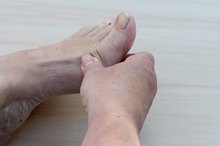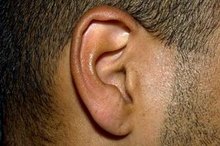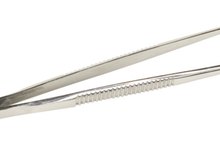Causes of Head Numbness
Head numbness, or skin numbness medically described as head paresthesia, is experienced as a disturbing lack of sensation in the head or portions of the head and face. This numbness results from a variety of causes, some traumatic and others due to infection or underlying disease.
If you are experiencing serious medical symptoms, seek emergency treatment immediately.
Nerve Injury
Trauma or injury to the head can produce nerve damage leading to head numbness and other acute neurological disorders. Irritation and pressure on the cervical nerves as well as traumatic injury to the head causing blood loss, contributes to the loss of sensation in the scalp, face and head. The trigeminal nerve can also be injured as a complication of dental treatment or affected by a disease condition such as diabetes.
- Trauma or injury to the head can produce nerve damage leading to head numbness and other acute neurological disorders.
- Irritation and pressure on the cervical nerves as well as traumatic injury to the head causing blood loss, contributes to the loss of sensation in the scalp, face and head.
Spinal Cord Injury
Neurological Disorders That Have Symptoms of Electrical Shock Feelings
Learn More
Irritation, trauma, or underlying degenerative disease affecting the cervical nerves along the spinal column can cause head numbness. Cervical nerves, specifically identified as C1-C4, are responsible for transmitting sensation to the head or face. Disorders such as:
- meningitis
- multiple sclerosis
- tumor
- herniated
- degenerative disk disease
- impact the spinal cord
Herpes Zoster
Numbness may occur only on one side of the head.
Stroke
About Trigeminal Neuralgia & Ear Pain
Learn More
A stroke can cause head numbness by restricting blood flow to the brain and head. The flow through the artery in the neck is interrupted and oxygen circulation is impeded, causing the numbness.
Epilepsy
Head numbness can be but one of the symptoms caused by epilepsy. Convulsions also interrupt the flow of blood through the artery in the neck leading to decreased blood flow to the head and numbness.
Tick Bite
Bites from ticks can bring on acute paralysis of muscles controlling eye movement and other neurological reflex disorders 1. Toxins found in tick saliva or bacteria carried and transmitted through a tick bite, can cause head numbness. Ticks carrying Lyme disease, can produce head numbness in the months or years after the bite. In contrast, tick paralysis, a rare disease with associated acute neurological symptoms, can be successfully reversed within 24 hours of removing the tick from a human host.
- Bites from ticks can bring on acute paralysis of muscles controlling eye movement and other neurological reflex disorders 1.
- Ticks carrying Lyme disease, can produce head numbness in the months or years after the bite.
Positional Head Numbness
Sometimes people sleep or watch television while lying on the back and with the head twisted to one side facing one shoulder. At times, blood flow is restricted through the artery in the neck, decreasing circulation to the head and causing head numbness. Numbness can also occur from propping the temple of the head against a wrist or arm, restricting the blood flow until the position is changed.
- Sometimes people sleep or watch television while lying on the back and with the head twisted to one side facing one shoulder.
- Numbness can also occur from propping the temple of the head against a wrist or arm, restricting the blood flow until the position is changed.
Muscle Tension
Muscle tension in the neck, shoulders, or upper back from either physical work or emotional stress can produce head numbness. The pressure produced by the affected muscles irritates nerves that serve the head and scalp, causing numbness.
Related Articles
References
- "Journal of the American Medical Association"; Cluster of Tick Paralysis Cases-Colorado, 2006;WJ Pape et al; October 2006
- "Journal of the American Medical Association"; A 70-year-old Woman with Shingles; Richard J. Whitley; July 2009
- Klein JP. Imaging of progressive weakness or numbness of central or peripheral origin. Handb Clin Neurol. 2016;136:923-37. doi:10.1016/B978-0-444-53486-6.00047-8
- Bracker MD, Ralph LP. The numb arm and hand. Am Fam Physician. 1995;51(1):103-16.
- Wipperman J, Goerl K. Carpal Tunnel Syndrome: Diagnosis and Management. Am Fam Physician. 2016;94(12):993-999.
- Mellion M, Gilchrist JM, De La Monte S. Alcohol-related peripheral neuropathy: nutritional, toxic, or both? Muscle Nerve. 2011;43(3):309-16. doi:10.1002/mus.21946
- Cohen KR, Salbu RL, Frank J, Israel I. Presentation and management of herpes zoster (shingles) in the geriatric population. P T. 2013;38(4):217-27.
- Halperin JJ. Chronic Lyme disease: misconceptions and challenges for patient management. Infect Drug Resist. 2015;8:119-28. doi:10.2147/IDR.S66739
- Okazaki T, Shinagawa S, Mikage H. Vasculitis syndrome-diagnosis and therapy. J Gen Fam Med. 2017;18(2):72-78. doi:10.1002/jgf2.4
- Saint-lary O, Rébois A, Mediouni Z, Descatha A. Carpal tunnel syndrome: primary care and occupational factors. Front Med (Lausanne). 2015;2:28. doi:10.3389/fmed.2015.00028
- England JD, Gronseth GS, Franklin G, et al. Evaluation of Distal Symmetric Polyneuropathy: the Role of Laboratory and Genetic Testing (an Evidence-Based Review). Muscle Nerve 2009; 39:116.
- Gilman, S, Newman, SW. Manter and Gatz's Essentials of Clinical Neuroanatomy and Neurophysiology, 8, FA Davis, Philadelphia 1992.
- Patten J. Neurological Differential Diagnosis, 2nd, Springer, New York 1996.
Resources
Writer Bio
Nancy LaPonzina blends clinical knowledge with an interest in alternative, holistic health. LaPonzina writes technical information for providers and users of medical IT software applications; newsletters; and nonfiction articles and Web content that have appeared in "Artnews," Manidoo Village," "Ingenue," "American Girl," and Dell specialty magazines.








